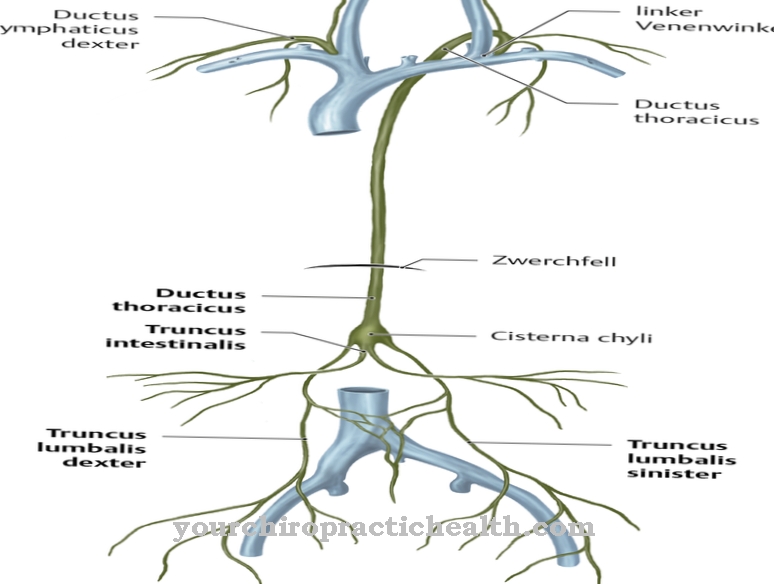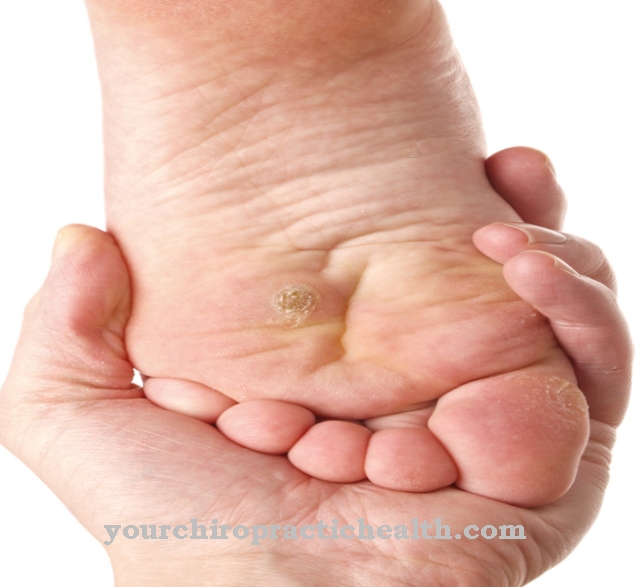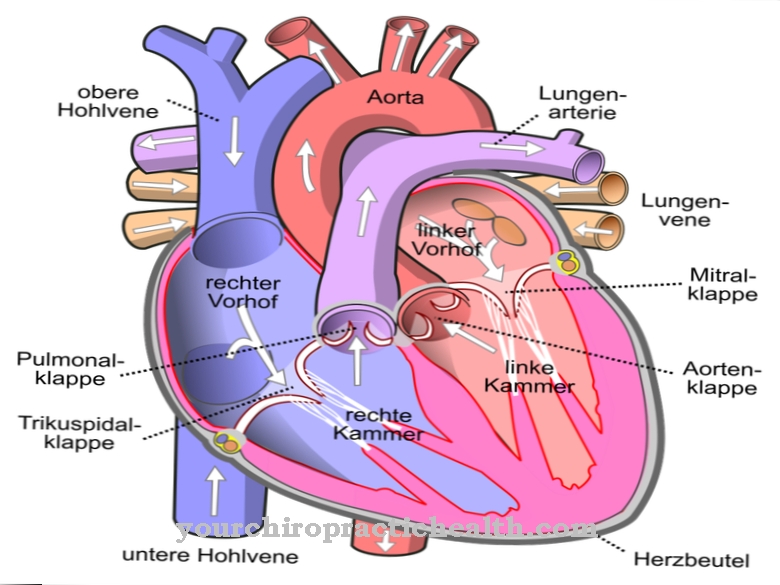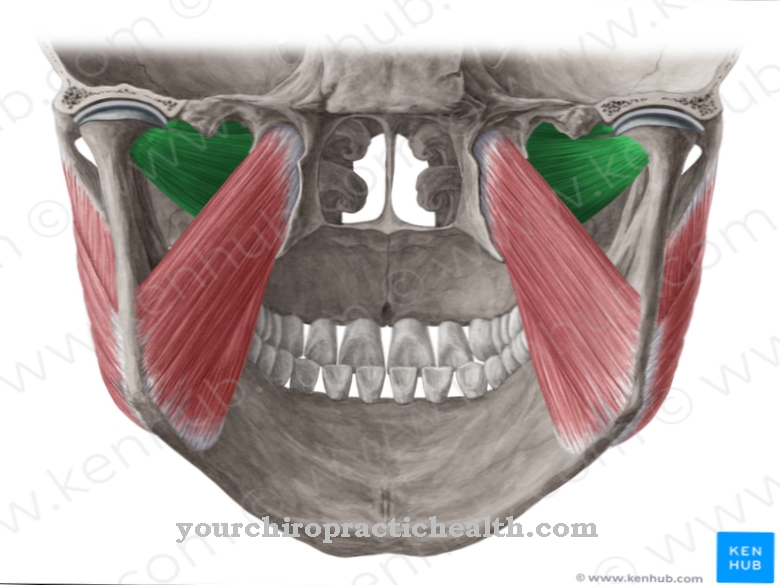In which Platysma is a skin muscle located on the neck. Located between the superficial neck fascia and the skin, there is no direct contact between it and the skeleton. The muscle, which is part of the mimic muscles, is activated in the event of tense facial expressions or shock reactions. It is prone to internal and external injuries and muscle strength deteriorates with age.
What is the platysma?
The platysma is part of the surface layer of the ventral neck muscles and, in terms of its function, belongs to the mimic muscles. The anterior neck surface is almost completely covered by the muscle mass. This is characterized by a large variety of variations.
It can appear as a pale, thin muscle plate and have a large number of breaks in the connective tissue. However, the proportion of connective tissue can also be small and the muscle area thick and red. When the platysma tightens, the corners of the mouth, lower jaw and lower lip are pulled down. If the lower jaw is fixed, this leads to tension and shortening of the neck skin.
The platysma runs superficially and, unlike other muscles, has a direct connection with the skin. Although the muscle is not in the face, it influences the facial expressions of the mouth, so that it is counted among the facial muscles. The muscle is also found in dogs and cats, as well as pigs. However, here it extends to the neckline instead of ending at the thorax. The muscle is also found in predators, but is complemented by two other neck skin muscles.
Anatomy & structure
The muscle runs from the area of the upper thorax to the cheeks and chin. It is a skin muscle, i.e. the striated muscles embedded between the skin and the fascia. Therefore there is no contact with the skeleton. It has its origin in the fascia, which covers the upper parts of the deltoid muscle and the pectoralis major muscle.
Some fibers also originate from the skin areas of the shoulders, neck, and chest. The platysmas then extends over the collarbone to about the second rib. The fiber strands running across the clavicle stretch along the lateral and frontal neck region. Sometimes there is an interweaving with the mutual fiber strands. Caudal to the linea obliqua, which belongs to the lower jaw, is the insertion of the platysma. In some cases, the fiber strands reach the connective tissue and skin of the lower half of the face.
Since the muscle is directly connected to the skin of the face, it can also change the facial expressions. Of course, many other muscles are responsible for this. Like the eye muscles and the tongue, the platysma is pervaded by many nerves. An injury can therefore cause muscle paralysis and disturbed facial expressions.
Function & tasks
The facial muscles include the muscles in the area of the face, which are located directly under the skin and allow various facial expressions through their contractions. Humans have 26 facial muscles, eight of which are responsible for facial expression: eyebrow lifters, eyebrow wrinkles, eye ring muscles, upper eyelid lifters, upper lip lifters, zygomatic muscles, lip extensors, oral ring muscles, corner pullers, pout muscles and lower lip pullers.
Almost all of these muscles are duplicated because the muscles are mirror-symmetrical. The facial nerve, also known as the 7th cranial nerve, innervates the facial muscles. It not only forms the basis of human facial expressions, but is also irreplaceable in non-verbal communication. Since the platysma is no longer in the face, some authors do not assign it to the mimetic muscles.
However, its function ensures that it is mostly assigned to the lip extensors. Just like the other mimic muscles, the platysma can move the skin. Its primary function is to pull the lower lip and jaw down or to the side. This allows emotions such as pain or disgust to be expressed. The contraction of the muscle is behind a variety of facial expressions, such as frowning, smiling, or grimacing. But hardly anyone has the ability to use the muscle in a targeted manner.
Diseases
The facial muscles play an important role in non-verbal communication, as they allow various emotions to be expressed. They are also necessary in order to carry out physical processes such as seeing or eating. They also regulate the opening and closing of the eyelids, which protects the eyes from foreign objects.
There are different diseases that can cause facial muscles. For example, diseases such as ALS or myotonic dystrophy weaken the muscles, lead to muscle wasting and symptoms of paralysis. A stroke or sudden paralysis on one side of the face also result in restricted use of the muscles. In a similar way to other muscles, the platysma is prone to tearing, stretching, and muscle atrophy, among many other potential problems. The platysma is susceptible to neck injuries that can invade the muscle.
Apart from serious diseases that can affect all facial muscles, it is typical of the platysma that when the elasticity of the skin decreases, two longitudinal folds form through the inner sides of the platysma. As you get older, the decline in muscle strength can also lead to a double chin. Because of this, the neck muscles also play a role in plastic surgery. In this area, botox or a platysmapoplasty are often used.
























.jpg)



